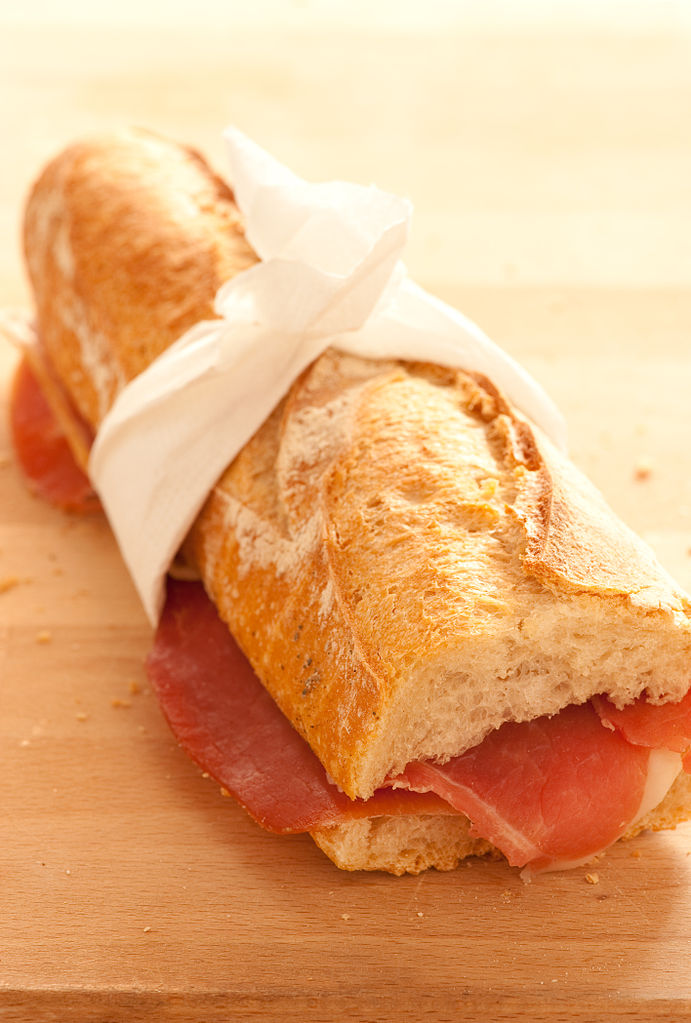As you might imagine, I was quite miffed when everyone’s favourite campus sandwich shop stopped offering to toast your baguette for you. Apparently this was because the toaster oven broke, and they found they could serve 100 or so more customers in total (per day I believe). From the firm’s point of view, it’s clear that they can make more money if they sell more sandwiches. It seems like a no brainer. But it’s not so clear how it’s affecting the welfare of their customer base. It’s also not so clear whether this is reducing the perceived value of their service by customers either. However, I’m not going to address that issue here.
Time for some modelling!
Let’s try to be a bit more analytical in trying to determine how well off the customers might be under the new sandwich regime. Suppose that there is a portion of customers (call them t) that prefer toasted baguettes. There is also a portion of customers (call them u) that prefer untoasted baguettes. Then our customer base might look something like this:

In addition, let’s assume there are two utility levels, high (H) and low (L), where H > L. So if you get the type of baguette you want, you are happy and get H. If you buy a baguette but have to make a compromise, then you get L instead, so you are a bit less happy with your lunch overall. The proportion in between t and u in the diagram, 1-t-u, are sandwich lovers in general, and will always get H.
In the initial case, where the shop serves both types of baguette, everyone will get H because everyone can choose exactly the kind of baguette that they want. Since the customer base is 1, this means that social welfare is just H overall.
Now let’s see what might happen when the shop gets rid of its toaster oven. All the guys who don’t have a preference for toasted baguettes are unaffected, of course. There are 1-t of these people, and they still all get H. Out of the people who like toasted baguettes, there will be some that stop going to get their lunch from the sandwich shop through pure outrage. These people, we will assume, are forced to buy horrid pre-packed sandwiches and therefore get 0 utility. The remaining toasted fans will end up having to settle for second best, so they will get L. If we let γ be the proportion of the t people that are still buying baguettes, then γt of them will be getting L overall.
Now, of course, if we left it there, it would be pretty clear that society is worse off, because not everyone is getting H, and also because some people are left picking plastic packaging out of their teeth. But the shop did what it did to attract more customers. So suppose there are v new consumers that are now in the market because there’s more room for them. Of these new guys, some will be perfectly happy with untoasted baguettes, whereas others are would-be toasted baguette fans. If we say α of them are toasted fans, then αv of the new people get L, whilst the remaining (1-α)v get H.
In other words, welfare under the new scheme is given by:
\[ \gamma tL + (1-t)H + v[\alpha L + (1-\alpha)H] \]
When is our toaster-less world better than the world with toasted baguettes?
A little bit of algebra gets you the following condition:
\[ v > \frac{t(H – \gamma L)}{\alpha L + (1-\alpha) H} \]
This tells us, perhaps somewhat obviously, that society is only better off if enough new customers are able to buy sandwiches to compensate for the welfare loss caused by the toaster oven void. The advantage of solving anything analytically though, is that it allows us to be a little more specific. The condition above also tells us that the level of new customers that needs to be attracted is higher if α is higher (i.e. more of the new customers are would-be toasted baguette fans), or if γ is lower (i.e. less of the initial toasted baguette fans keep buying baguettes).
If α=0 and γ=0, so that all new customers like untoasted baguettes better anyway and all of the t people from the first case stopped buying baguettes, then we get the obvious condition: v > t. In other words, we would need to be able to replace all toasted lovers with untoasted lovers. Notice, however, that as soon as we assume that some of the new crowd would have also liked to have their baguette toasted, we need far more new people than before if we want our sandwich society to have the same welfare level.
The best possible case, i.e. the lowest number of new customers we would need for society to have a welfare level of H, is when α=0 and γ=1. In that case, the condition becomes:
\[ v > \frac{t(H – L)}{H} \]
This highlights the importance of the utility difference between the people who get their best option and those who have to settle. If it doesn’t really harm you much to settle for a lesser baguette, then it’s clear society will easily be better off without the toaster oven. But, if you are like me (the prospect of an untoasted baguette seems like a travesty of justice), then although all those extra sales might seem like a good idea, it leaves a void in society that no amount of raw bread can fill.


Very well explained.